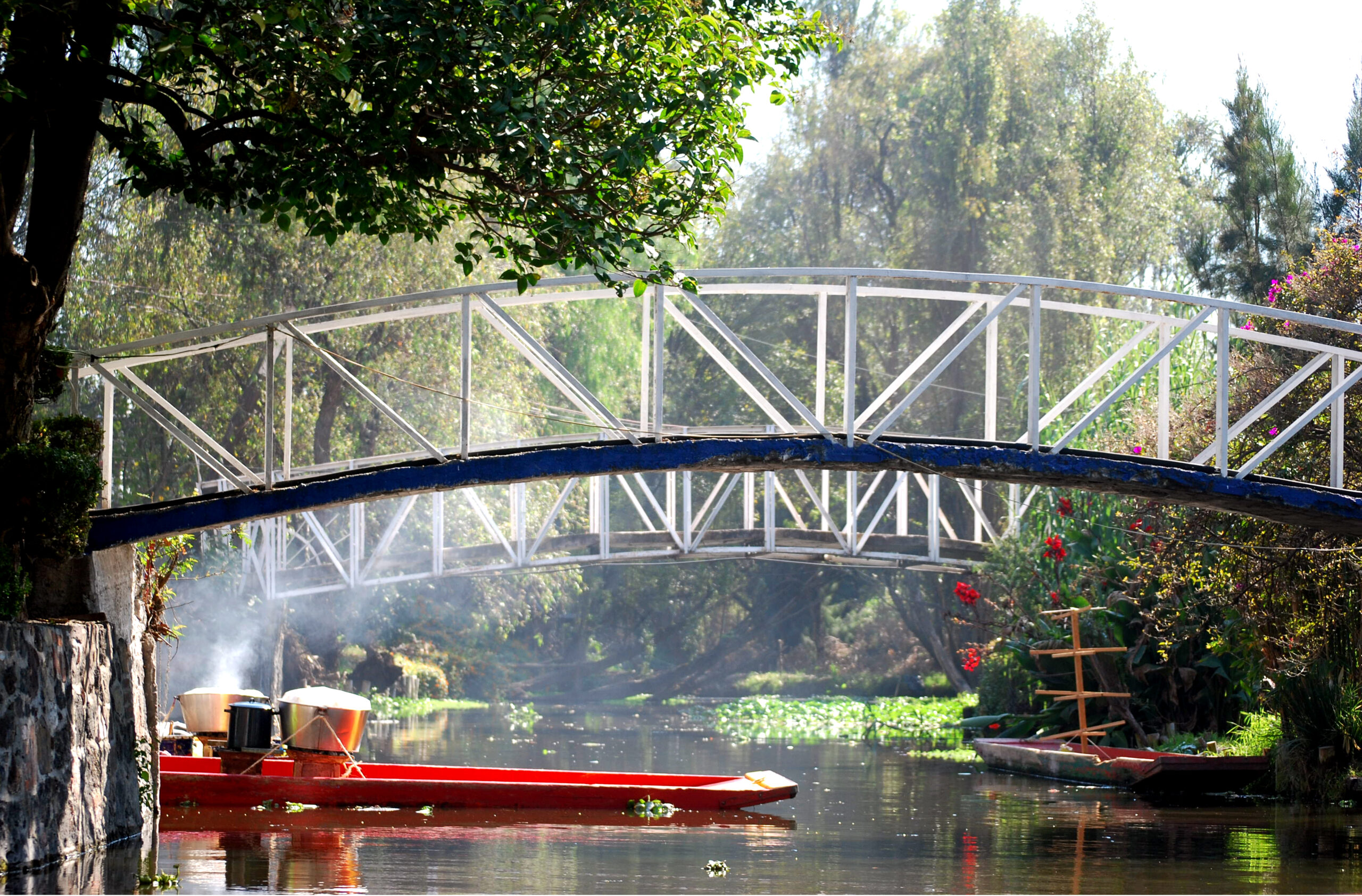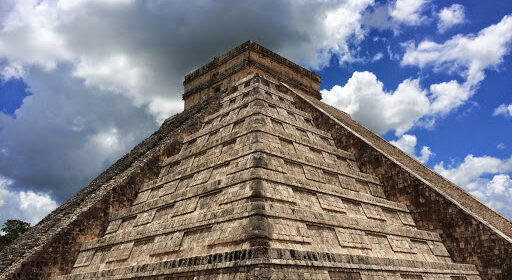Puebla and Cholula
The drive from Xochimilco/Mexico City is scenic with colorful houses up the hills, wide view of the Volcanoes, and clear blue skies up above. The new toll roads make the drive through the hills fairly easy. On our way to Puebla, we hit the Cholula ruins first in the afternoon, followed by a short trip to Puebla City.
Cholula
A city of Churches, Pyramids and Volcanoes, the area boasts a wide array of visual treats. The entry into the ruins cost about MXN $65 for non-Mexicans, and typically there is a line to enter. The entrance to the pyramids/ruins from the main road is through a tunnel that is part of a huge network of tunnels. ~10 kilometers of tunnels have been identified and restored for tourists’ use so far. The tunnel, although is marked well, is dimly lit, really narrow, and when crowded can be extremely claustrophobic.
Through the tunnels, you will be taken to the other side of the pyramids where a steep set of stairs will lead you up to the top of the pyramid to the Church. From the top of the Church, amazing views of the city with colorful houses and churches, and the volcanoes (if the sky is clear) can be cherished.
The other part of the ruins, the pyramids can be viewed from the bottom of the stairs, and also can be accessed easily. These pyramids were also built in four stages similar to the Templo Mayor in Mexico City. But these pyramids are not as grand as the ones in Teotihuacan, or Chichen-Itza (Mayan), but it’s cultural importance is astounding as it was at the helm of the civilization and was one of the most importance centers at that time.
Parking situation near the ruins area can be tricky. But there are public parking spots available at nominal charge (~MXN $25) in the by lanes parallel to the main street.
Puebla
After exploring the little city of Cholula, we ventured out to the much larger and more vibrant, Puebla. We headed straight to the Zocalo area, and parked in one of the public parking lots at MXN $14 per hour. The main street of Ave. Reforma, during the holidays, was swarming with tourists (mostly Mexicans) and was adorned with lighting fixtures everywhere. The festivities were apparent in each direction, and it grew as we walked closer to the main square of Zocalo. The historic center of the city is surrounded by hotels, restaurants and shops, along with historical sites. We visited the two most interesting ones –
a. Cathedral de Puebla – Embelished with artwork on metal, chandeliers and murals, this was another masterpiece of a church. During the holidays, thousands of visitors come in for casual viewing or prayers.
b. Palacio Municipal de Puebla – The grand structure right next to the park/square, is the main office of the city. A guide will escort a group of tourists upstairs and explaining the history of the palace along with the city in great detail. The guide only speaks Spanish so prepare yourselves.
For dinner, the little street side shops on Ave 2 Sur (between Calle 3 and Ave Reforma) are really good options. Tip – to be slightly away from the crowd, and away from the beggars, choose a seat near the restaurant walls. Most places here will also offer some live music by local artists.
Location Tips –
GPS Address: Juan de Palafox y Mendoza, Centro, 72000 Puebla, PUE, Mexico
Parking – Look out for sign “E” (short for Estacionemente/Parking) along the way to the Zocalo square along Ave Reforma (or any parallel street)















 1800’s, this chain of hotels were on major stops on the rail tracks to the western coastline. This specific hotel is one of the biggest landmarks of the city and can be seen from afar as it is situated on a hill next to the Saint Laurant river. It is where arguably the most historic meeting of World War II between Winston Churchill and Franklin D. Roosevelt was held in 1944.
1800’s, this chain of hotels were on major stops on the rail tracks to the western coastline. This specific hotel is one of the biggest landmarks of the city and can be seen from afar as it is situated on a hill next to the Saint Laurant river. It is where arguably the most historic meeting of World War II between Winston Churchill and Franklin D. Roosevelt was held in 1944. are going to make you believe that you are in the other side of Atlantic. Be sure to click pictures, but do not forget to experience the charm of the area by visiting local shops and sink in the culture.
are going to make you believe that you are in the other side of Atlantic. Be sure to click pictures, but do not forget to experience the charm of the area by visiting local shops and sink in the culture.













